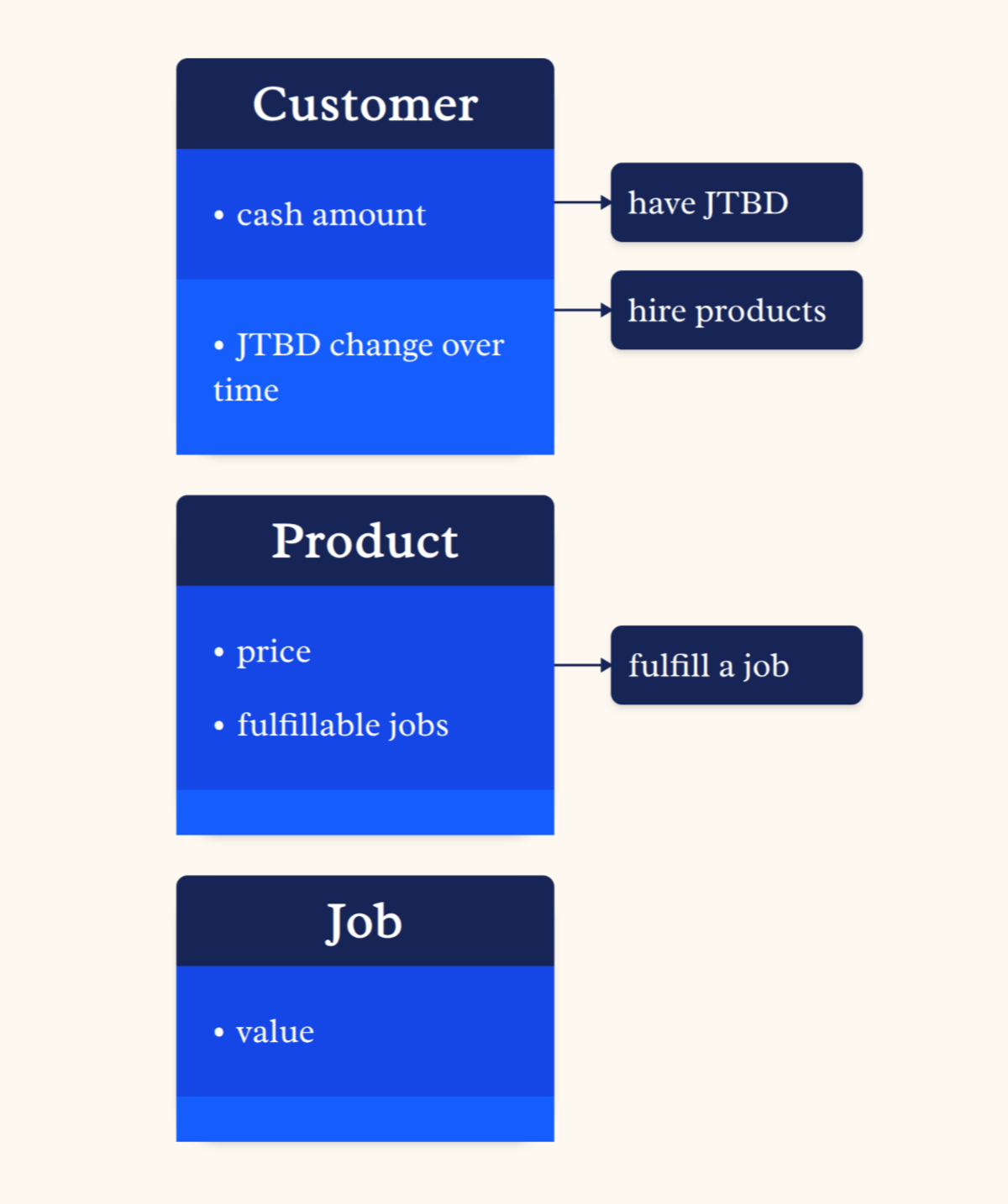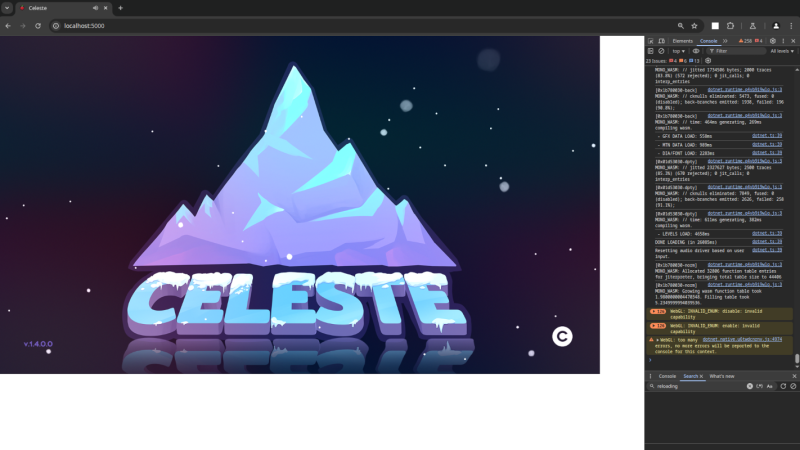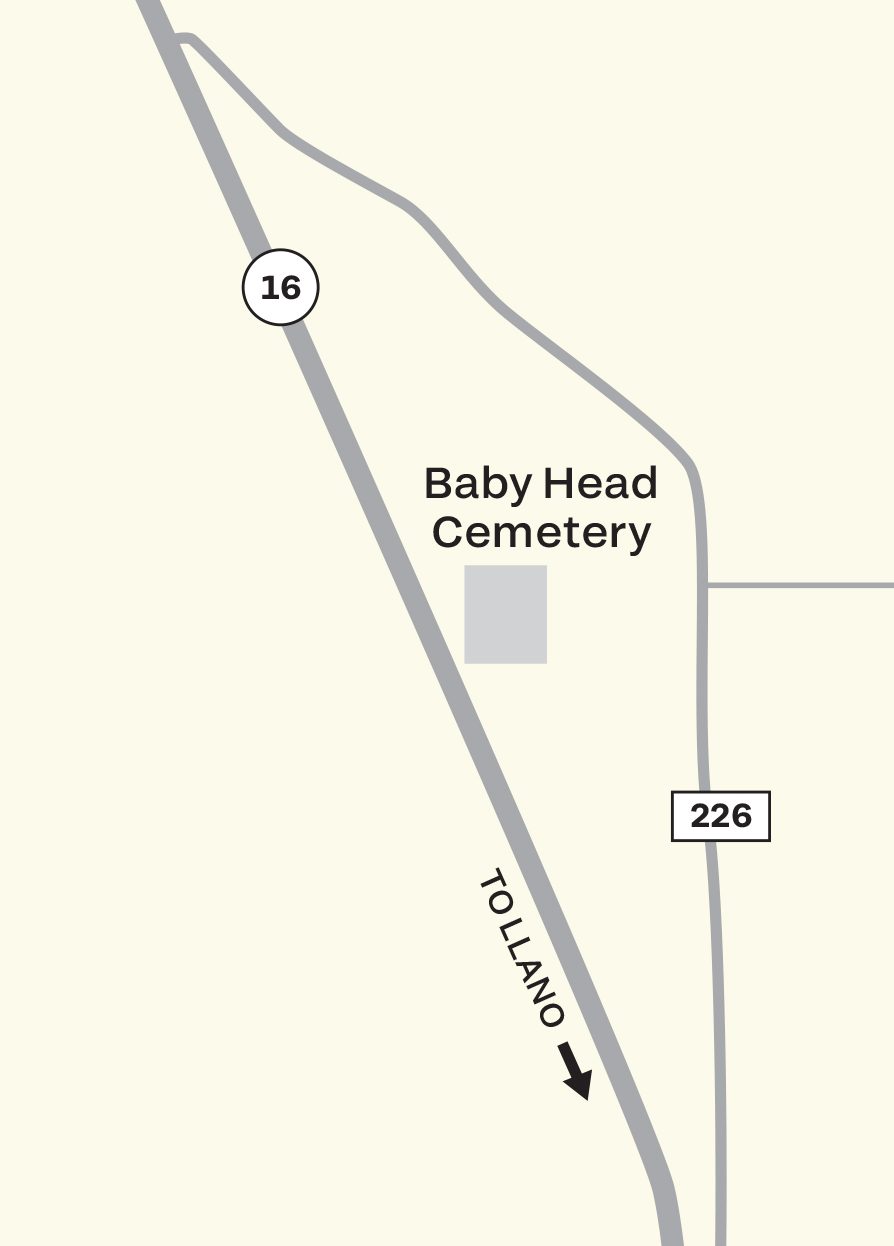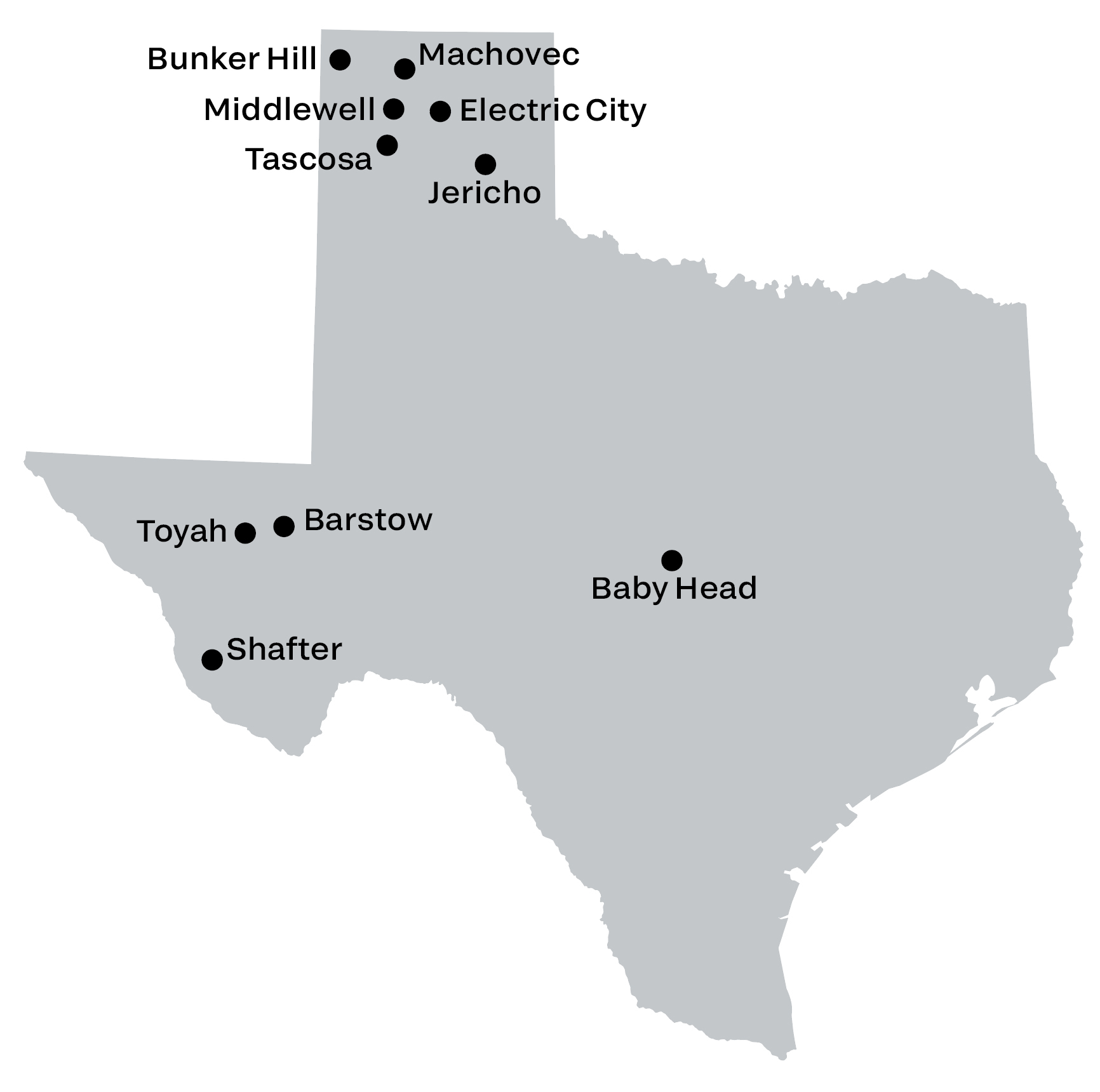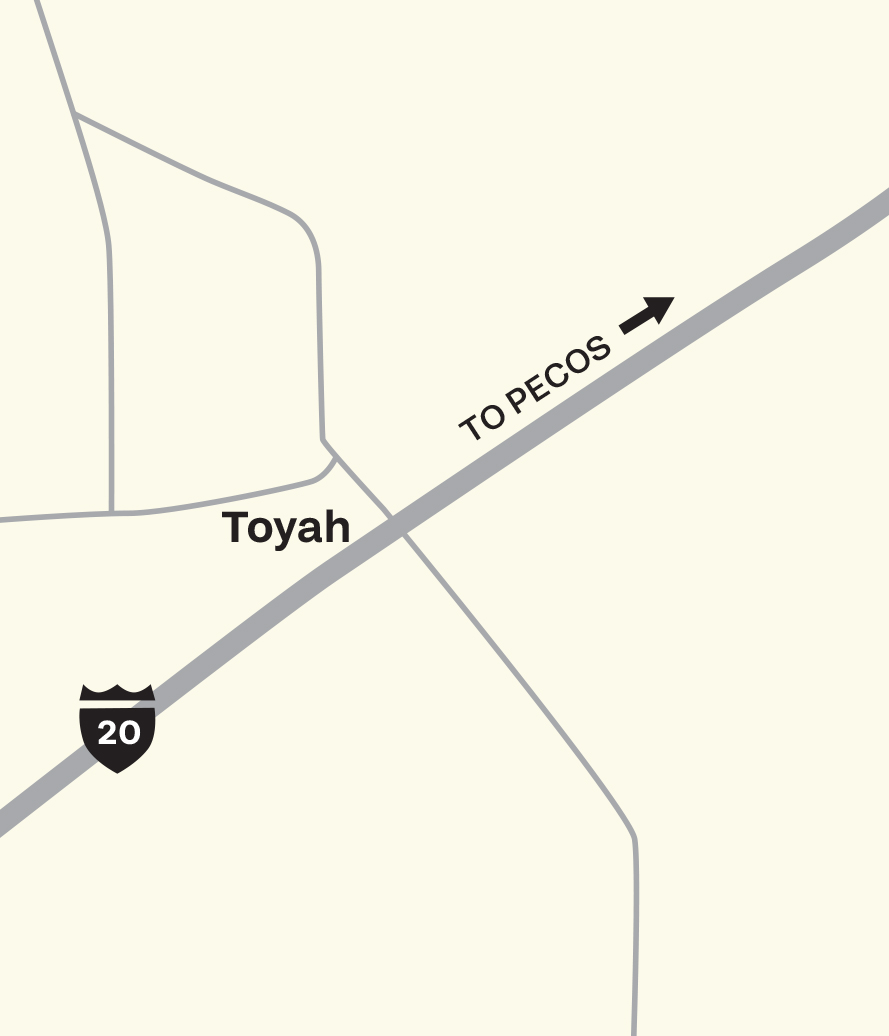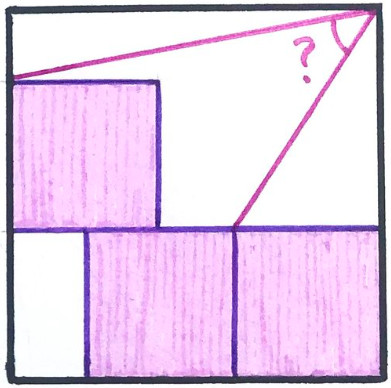Your brain is a tool very much like your hands are tools. You use them like tools to do things, even if most of the time you do it instinctively, as if they were givens. Only when you lose their control—a hand injury, a time of extreme mental fatigue or stress—might you realize that these were actually the best devices in your toolbox.
You could say that, to some extent, most of your appendages and muscle-controlled organs are tools in a similar way. But hands and brain are special: they can learn new skills almost without bound and, especially, they can build new tools.
The mind-built tools, or mental tools I return to over and over in this blog are, mainly, framings and models. Although I didn't invent these concepts, I've worked to make them clearer, less ambiguous, and more practically useful. (I have already written a lot about them, so I will spare you the details here—if what follows is confusing to you, you might want to visit some of those links first.)
Knowing framings and models in this enhanced form is a good idea, I think, because they get to the core of what it means to "understand" anything, because they can help you debug your thoughts, and because (among other things) they express how some people can suffer and even die from mental causes.
The main thing I'm working on now (besides the long-overdue final installment of my Purpose Trilogy... almost ready!) is how to make these concepts of framings and models more convenient in practice. Theory and understanding are nice and all, but how do you use these ideas in your daily life? My current question is, can we visualize them?
Two weeks ago we saw that one way to do that is to tinker with the boundaries. But that is a ten-thousand-foot view of things, and there is a limit to how much detail it can handle. Let's try something else. It turns out that visualizing framings is surprisingly straightforward.
First, I'll show you a way I propose you can draw framings and models, then I'll give you a very quick tour of real-world examples in three categories: what business books sell as "mental models", what science calls "models", and how we think about mundane things of (apparently) different domains.
This approach is work in progress and a little rough around the edges. Email me your thoughts on how to improve it!
Visualizing Framings
In short, a framing is the definition of a set of "things" that "exist"—what I call black boxes—and everything else is taken not to exist at all, at least while you're using that specific framing. In other words, a framing is a deployable metaphysics or ontology.
I'll show you plenty of practical examples later in this post, but let's build this gradually.
The obvious thing to do is to treat each "thing", each black box, as a literal box.

It's equivalent to saying, "this is its own thing, separate from the rest of the world, and it does stuff in a somewhat well-defined way."
A black box usually has some properties that we use to describe it, so we write those inside a box.
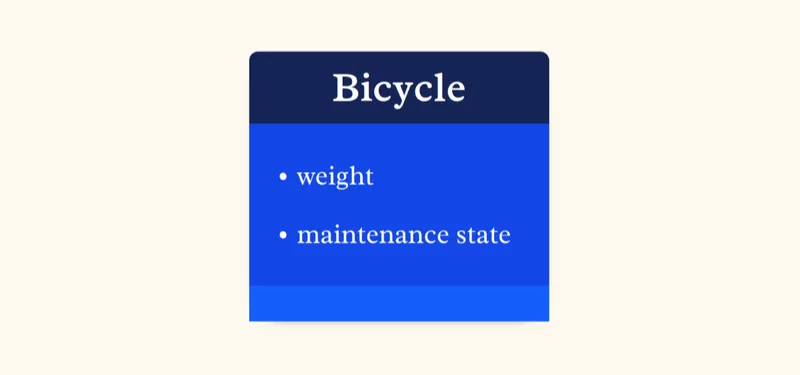
Some black boxes will also have an intrinsic behavior or mutability that happens on its own, without being induced by the interaction with other black boxes. Remember that black boxes are so called because we choose (or are forced to) ignore what happens inside them. If you look closely, this mutability usually results from interactions of smaller components within and around the system, but those details fall outside the scope of this particular framing, so we treat them as a mysterious "behavior".
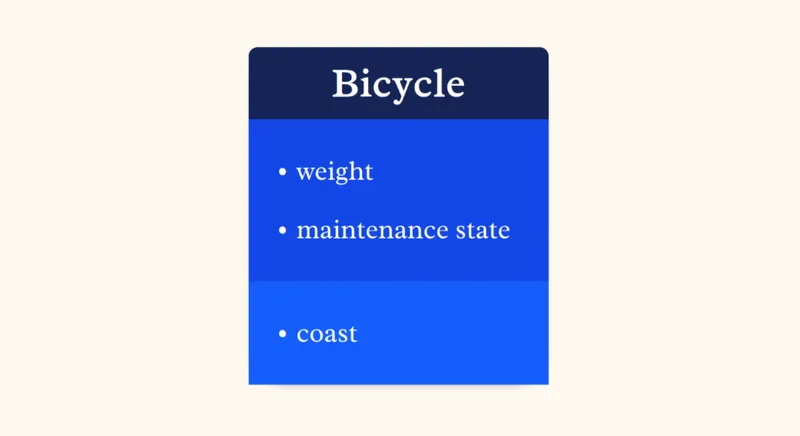
Finally, every black box interacts with the other black boxes in its framing in various ways. The exact mode of interaction depends on many things. In truth, it depends on too many things to hope to keep track of them all in one's mind, but that's not a problem. This is precisely what framings are for: simplifying reality by ignoring all but the most relevant interactions.
You could represent this interface as a small set of predefined ways in which that black box can relate itself with other black boxes. These aren't outputs or inputs of the system: they are a catalog of the interactions that you consider possible in the scope of the framing.
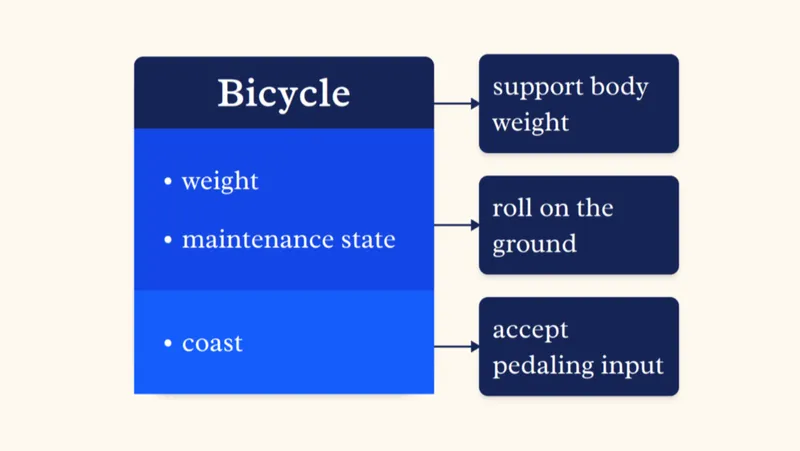
That is all you really need to think about a "thing" in your mental simulations of the world. But the examples above might leave you with a bad taste in your mouth. Surely there is a more rational and effective way to model a bicycle, you might be thinking. There are more factors to consider, and probably there are better ways to structure the problem for easy solution. I agree! I'm not saying that this is the optimal way to think about this or any other specific situation: I'm saying that this is roughly how our brains do it automatically and inescapably because of their fundamental structure and composition.
The limitations of this way of building framings are the limitations of the human mind.
Visualizing Models
Models are just configurations of the black boxes that exist in a framing. Think of a framing as a collection of types of bricks, and of a model as one of the nigh-infinite structures you could build with those types of bricks.
If a framing is about defining what exists, a model is a specific way in which things that exist actually interact and interface with each other. So some people might have an ultra-simplified model of a bicycle's movement:
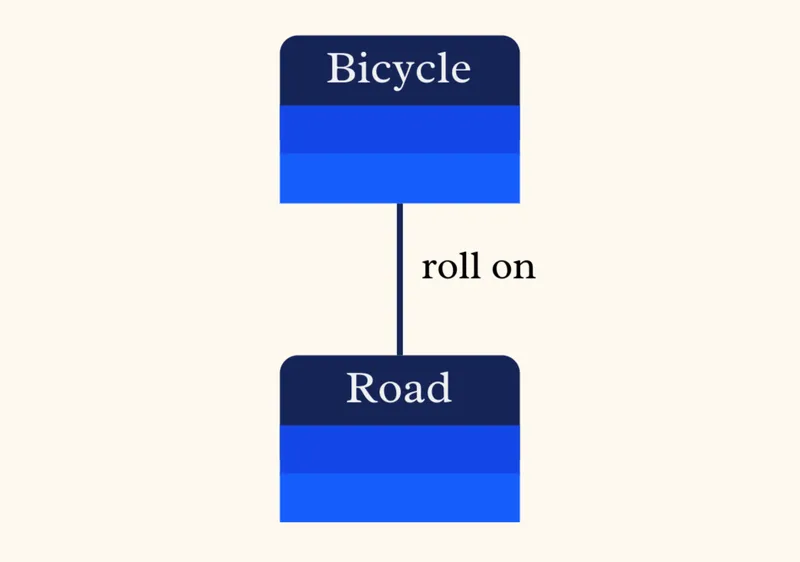
Others, perhaps those more familiar with cycling, might have a model that takes into consideration more interactions.
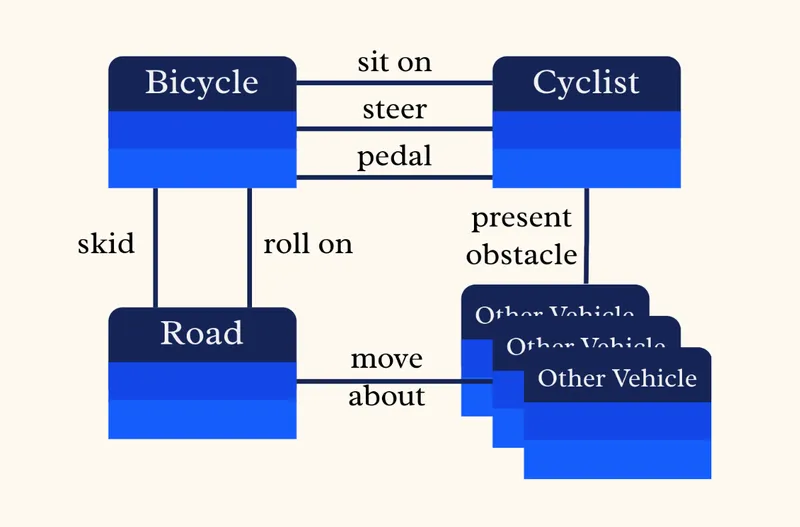
There is no predefined or correct way to model a given situation. Depending on what you know, what you remember, and what you care about at a given time, the level of sophistication of your models will change. The healthy tendency, I think, is to simplify them as much as you can get away with it.
The problem with this kind of visualization is that it is so easy it is boring. This is such a basic function of our brains that all of this seems obvious—not which exact model is perfect for a specific goal, which is not obvious at all, but the fact that there are some ways to connect things in your mind.
For this reason I will avoid drawing this kind of model diagrams in most of the practical examples below. Once you see how the framing is defined, plausible models built on it will promptly pop up in your mind. The juice is in the framings.
Examples: Commonly Cited Mental Models
Occam's Razor
One of the oldest and best-known mental models, powerful and memorable for its simplicity: when faced with two competing explanations for the same phenomenon, the one that makes the fewest (or simplest) assumptions is more likely to be correct.
What this does is create a two-element framing: a world in which there are these black boxes called "explanations" and these other black boxes called "assumptions", and they connect through the relation "based on".
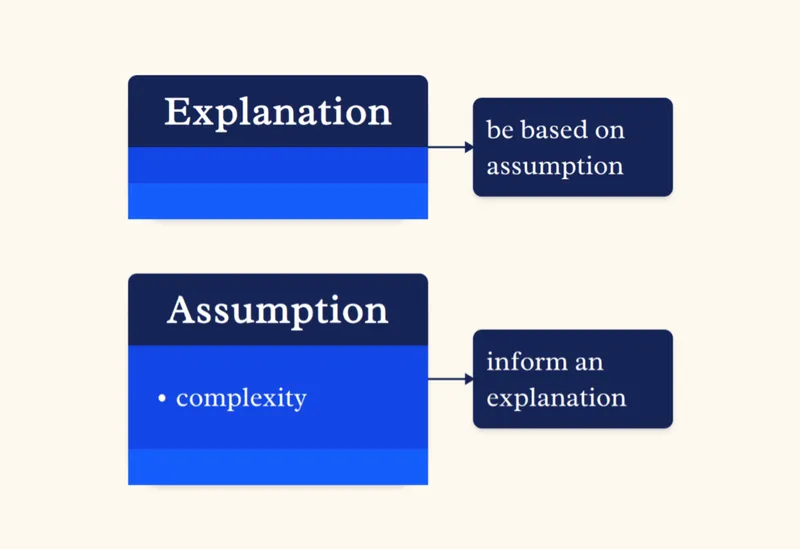
Connect an explanation's interface plug to that of one or more assumptions, and you have a model:
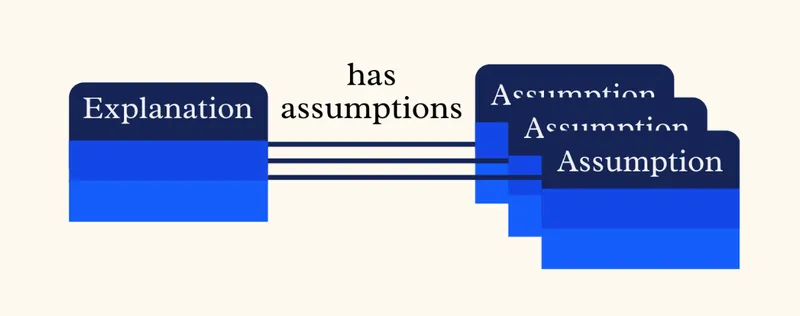
That model tells you that the number and complexity of the assumptions underlying an explanation determine how likely that explanation is to be correct. For this judgment, nothing else matters: not even the exact contents of explanations and assumptions! They are true black boxes for Occam.
Jobs to Be Done
JTBD is a neat mental model proposed by Clayton Christensen to think about business. It shifts the focus from who a customer is or what product they buy, to the underlying "job" they are trying to accomplish. People "hire" products and services to get a job done.
A person doesn't buy a drill bit because they want a drill bit; they hire it to create a quarter-inch hole. A fast-food chain might realize people aren't just buying a milkshake (the product), they are "hiring" it to make a long, boring commute more interesting (the job).
This shift can lead to ideas that wouldn't otherwise come up. For example, the traditional, pre-JTBD framing probably looks something like this.
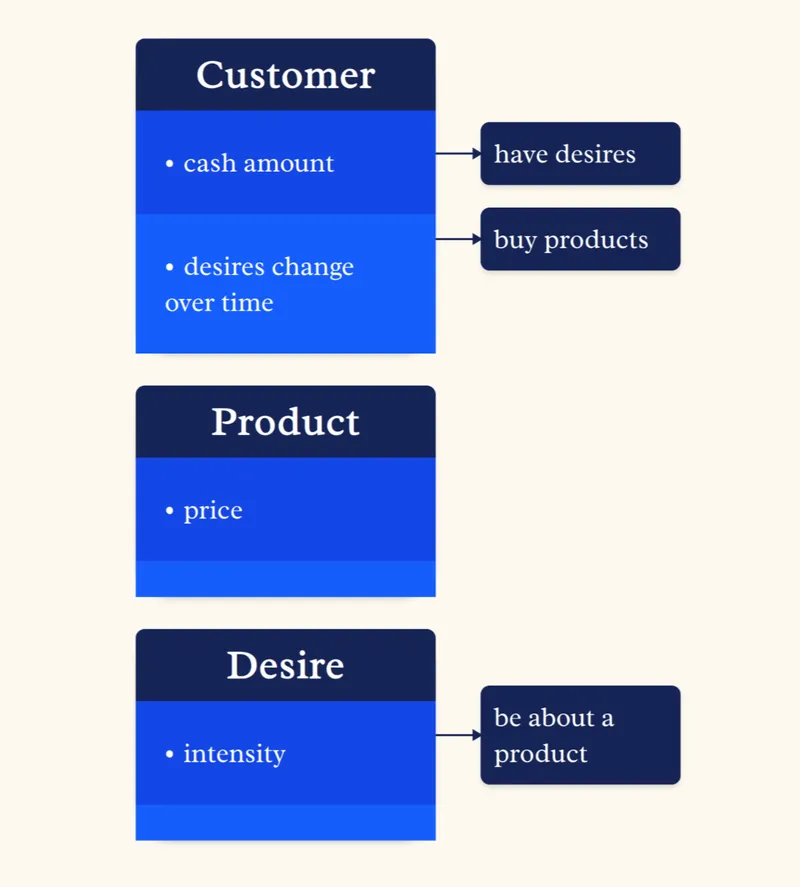
Suppose you wanted to increase sales of, say, your milkshake. In this framing, you might think about tweaking the milkshake's flavor and price to make it more desirable. This might work, but often it doesn't.
Jobs to Be Done uses another framing:
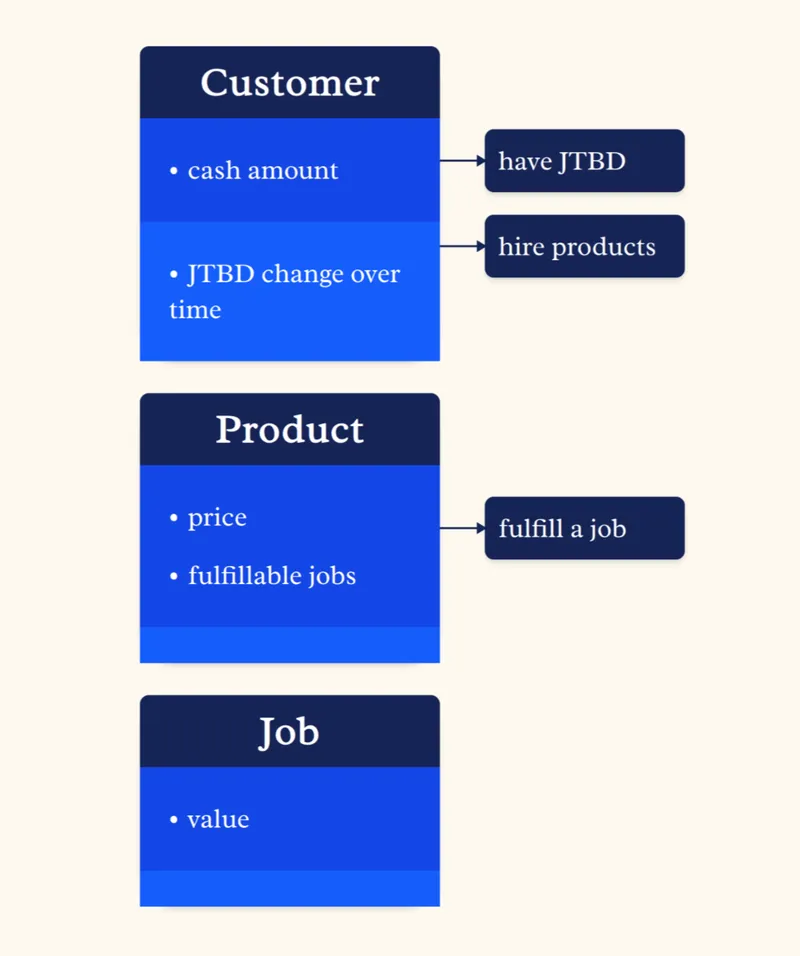
The models you build in this framing may look similar on the surface, but they are not. Whereas before the focus was on the product's qualities, now it is about how the product can fulfill a specific job—how it solves a practical problem. In the milkshake example, where you realized that the job it is usually hired for is to kill time during a long commute, you may consider making the milkshake thicker so that it lasts longer (this is an example Christensen himself used).
The milkshake's thickness would not be the first thing you consider when thinking about its desirability. By adding this new black box called "job to be done" to your ontology, though, the same idea may become almost obvious. This is a mental model doing its job.
Try It Yourself
It's actually quite fun and instructive to figure out what framing and model (as defined in this blog) is employed by any of the popular "mental models" floating around on the internet. For example, take this post by Gabriel Weinberg and go through his list of mental models. What do they define as "things that exist", and how do they arrange them together in ways that change how you think?
You'll notice immediately that, lacking a clear definition of what they mean by "mental models", those lists tend to be uneven patchworks of qualitatively different things. Some of those "models" on Weinberg's list are not complete framings but single black boxes, presumably meant to be added to existing framings or carved out of the forgotten "rest of the world". Others are suggestions of new boundaries to draw inside existing black boxes. I think that the clarified definitions I provided should make the roles and proper applications of these different beasts more intuitive.
Examples: Scientific Models
Models in Physics
Science is the realm of mental (and non-mental) models-as-tools. Most scientific work is about the conscious choice of framings and processes to build, vet, and select the best models inside them. This is a very deliberate, systematic way to work with models. Indeed, it was probably scientists who first created the black box called "model" in the first place.
If you've ever taken a high-school physics class, you have used models in this way, too. You might have solved a problem like the following.
A car is traveling down a straight road at a constant velocity of 10 m/s. The driver then presses the accelerator, causing the car to speed up at a constant acceleration of 2 m/s² for a duration of 5 seconds.
(a) What is the final velocity of the car after those 5 seconds? (b) How far has the car traveled during this 5-second period of acceleration?
This is usually solved by framing it like this:
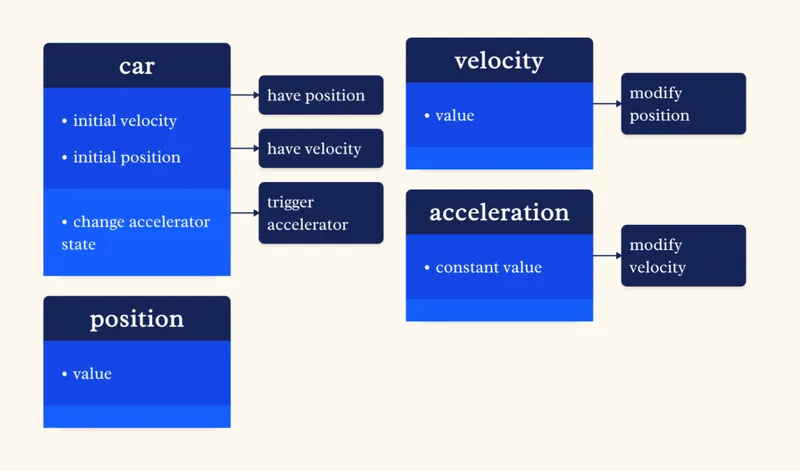
This framing is complex enough to solve problems with constant acceleration like the above, and you can also use it to build models of objects with "piecewise-constant" acceleration, i.e. where the acceleration is constant at value A for some time, then instantly changes to a different constant value B, and so on.
If you have problems where the acceleration changes continuously in more complicated ways, however, this framing will fall short. To solve those, you'll have to introduce black boxes like integrals and derivatives.
More advanced topics, like materials science, quantum physics, and general relativity, all proceed in this same way. The difference is only in that they handle more complex and counterintuitive framings to solve their respective problems.
It's a bit ironic. This core activity of physics—creating appropriate framings to answer questions—is squarely in the realm of "art", not "science". There is no predetermined, "right" way to frame a system, and finding those that are good enough is a matter of trial, error, and intuition. Fortunately, for all but the most cutting-edge fields, textbooks offer vast catalogs of pre-built framings to reuse and tweak as needed.
Examples: Everything Else
Up to now, you might still be clinging to the idea that framings and models are specialist tools used knowingly in jobs like marketing and research. But no. Consciously or not, we all use framings and models for every single thought we think. We can't think in any other way.
The best way to see that is looking at what psychologists and philosophers call "folk science"—the intuitive, implicit understanding of how the world works that we all have since infancy.
Folk Physics
Even toddlers know a range of physical "laws" that allow them to interact with the things around them and make certain modest predictions. These form a set of empirically-known framings that doesn't need to be taught, and we all carry them in our minds even as adults. Some of us, over years of education and work, learn to improve them or replace them with more advanced and powerful framings and models, but that is less common than you might think.
For example, people intuitively believe that objects thrown upward will always fall back down. In other words, a simple black box like this:
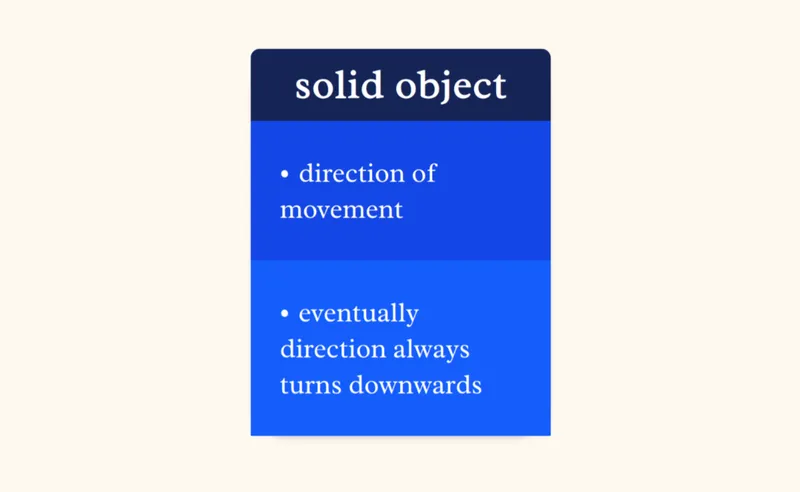
This framing works just fine in most everyday situations, even though it is pre-Newtonian in nature. But if you expand the scope of application—e.g. very high velocities—it will stop working. The concept of "escape velocity" doesn't exist in this bit of folk physics, and someone will have to teach you a better framing to handle that.
Folk Biology
People generally believe that belonging to a species is determined by descent:
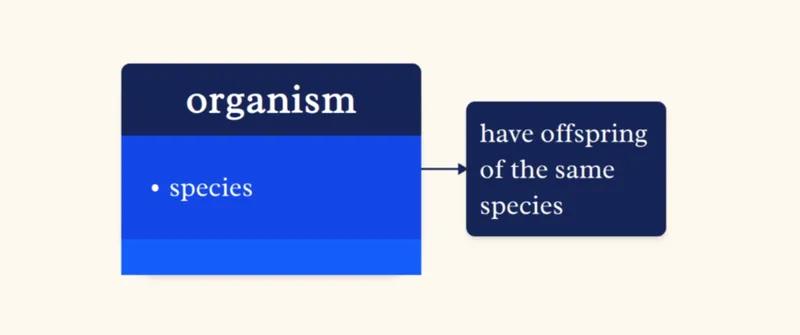
In most cases, this is a reasonable assumption. But if this were really true, how would new species begin?
As Daniel Dennett explains well in his book Darwin's Dangerous Idea, new species are surprisingly difficult to pin down because they only make sense in a retrospective sense.
Speciation ... has a curious property: you can’t tell that it is occurring at the time it occurs! You can only tell much later that it has occurred, retrospectively crowning an event when you discover that its sequels have a certain property.
Each offspring is always extremely similar to its parents, except for a few tiny mutations here and there. It is only after those offspring have lived their lives, and their offspring have lived theirs, and so on for a while, that we can tell if any given mutation turned out to be a key differentiator of a budding new species. Dennett clarifies this with an analogy:
Other concepts exhibit similar curiosities. I once read about a comically bad historical novel in which a French doctor came home to supper one evening in 1802 and said to his wife, "Guess what I did today! I assisted at the birth of Victor Hugo!"
To understand speciation in a less "folk" and more scientific way, you need a bigger framing where, alongside the "organism" black box, you have other black boxes like "population" and "lineage".
(By the way, improved framings like Dennett's lead to a fun realization: you and everyone you know is yet another attempt at starting a new species. Will you succeed?)
Folk Psychology
When you see someone reaching for a glass of water, you intuitively infer they believe the glass contains water and desire to drink it. This attribution of mental states to explain behavior is a typical example of folk psychology, our intuitive approach at making sense of other people.
Folk psychology (and theory of mind) tends to be more complex and fuzzy than those neat physics problems, for obvious reasons. Your implicit framing for the scene above might be something like this:
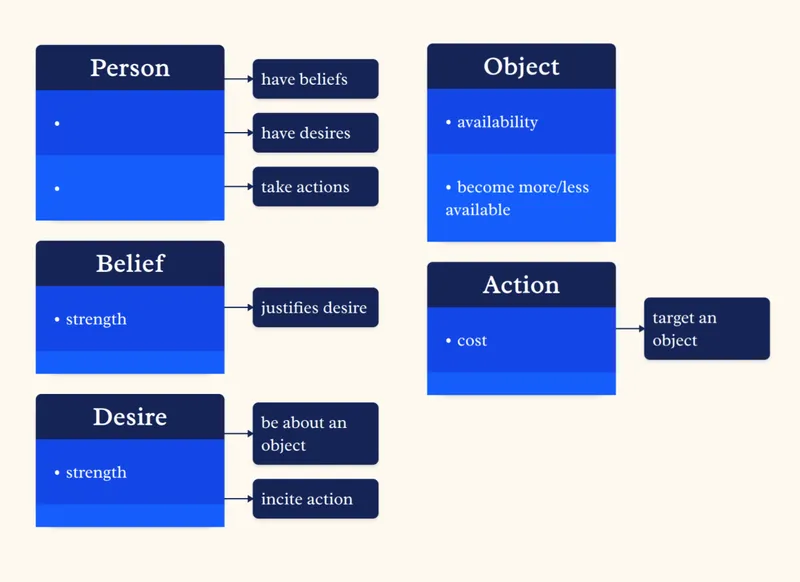
If words like "belief" and "desire" seem perfectly natural and clear to you, ask yourself: where are they? What are they made of? There are no "belief neurons" or "desire neural networks" in the human brain. People have looked. These concepts are artificial boundaries that we created to delineate convenient black boxes for our explanations of the world.
But folk psychology creates the risk of what I call Tunnel Vision—forgetting that you're using a simplified framing of the world, and consequently becoming trapped inside it. It's when you believe that people have to behave in certain ways, and that you just can't break free of certain conventions that society has imposed on you. Almost as if those were laws of physics.
It's All Just UML
If you have a technical background, you may have noticed that the diagrams I drew above are eerily similar to Unified Modeling Language class diagrams. UML diagrams are are more complex and have more moving parts, but they are essentially the same as those I've been drawing.
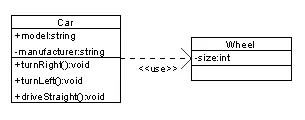
So am I stealing ideas from engineering? Yes! In a Robin Hood way, though. When James Rumbaugh invented this way of representing the relationships between entities, he was thinking only about software architecture. The problems his team was trying to solve were about designing the relationships and interactions between many parts of large computer programs. But what they discovered had a much broader applicability than they seemed to think. Wouldn't it be nice if all the visual tooling and methods they built for a specialized sub-discipline turned out to be useful to better understand how the mind works? ●
